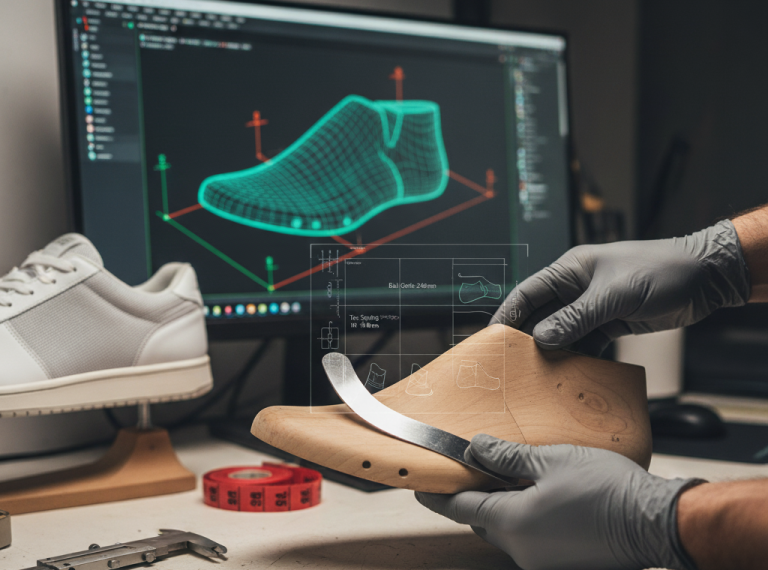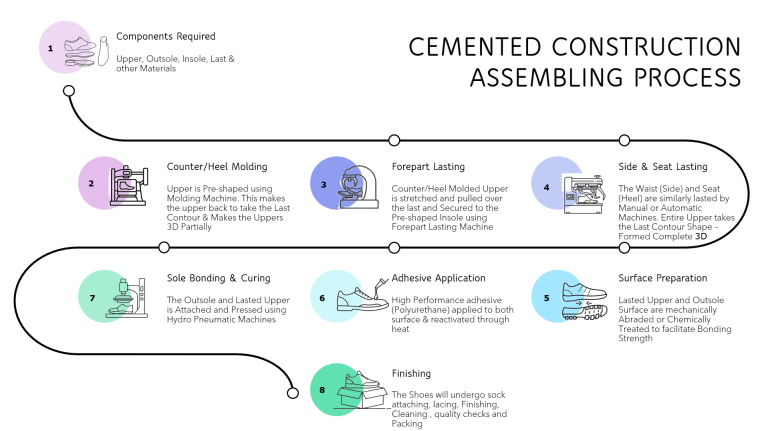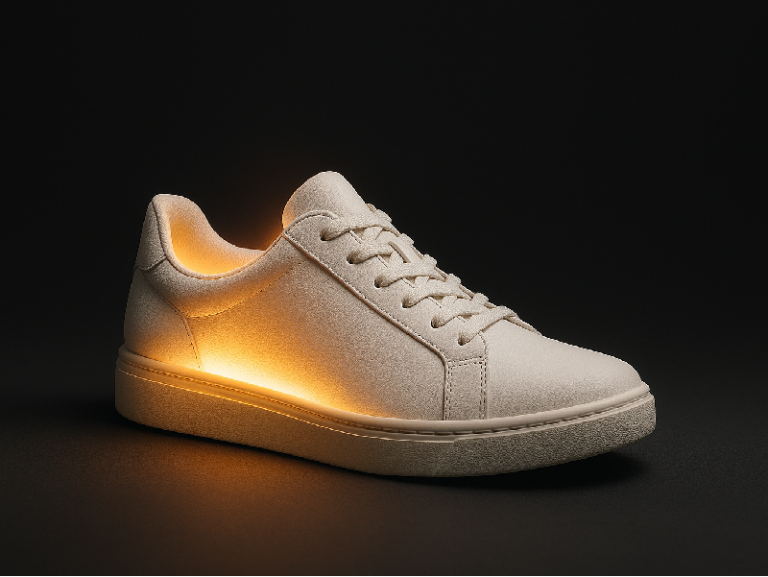Unearthing Footwear’s Rich History: A Journey Through Time (Revised Edition)
Dive into the captivating journey of Discover footwear history as we build on “A Step Through Time: The Evolution of Footwear.” This updated exploration traces the evolution of shoes from primitive protections to transformative industrial advances. With fresh insights into ancient origins, cultural influences, and manufacturing innovations, this post reveals how footwear shaped dress, health, and society. Explore the roots of global shoe design evolution and uncover hidden stories.
🌍 Primitive Origins: The Dawn of Protection
Primitive ancestors crafted the first foot coverings to shield against jagged rocks, burning sands, and rugged terrains, marking a key milestone in footwear history. These early designs, often made from plaited grass or rawhide strapped to the feet, prioritized survival in harsh conditions. As civilizations advanced, foot protection gained significance, with records from Egyptian and Chinese cultures highlighting this need. This foundation spurred the development of refined ancient shoe design, blending utility and well-being.
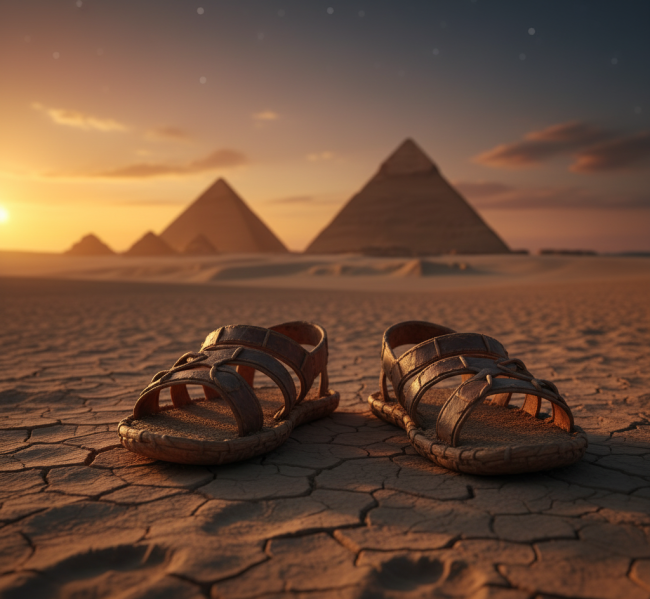
🏺 Ancient Adaptations: Culture and Climate Influence
Sandals ruled warm climates, often adorned to reflect local customs and enhance footwear history. Egyptians mastered plaited papyrus leaves for artistic sandals, while Japan used sandals to signify social status across households, merchants, actors, and professions. Greece emphasized beauty in elegant designs, and Rome prioritized military utility for long marches. In colder regions, the moccasin emerged with its puckered seam and ankle string for stability against the elements.
These adaptations showcase how cultural footwear history evolved with environment and status.
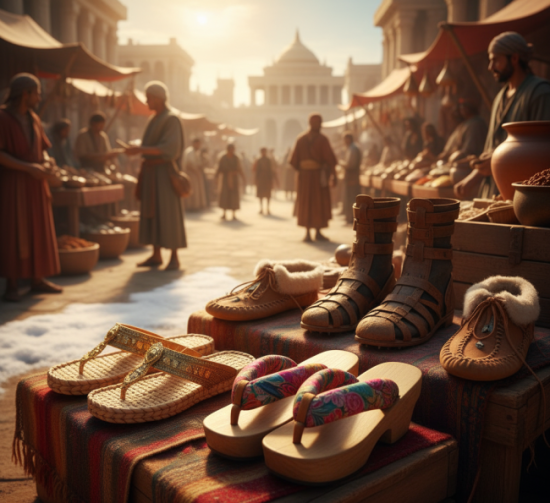
👑 Footwear as Fashion: From Lavish Designs to Practical Fits
Shoes became a key element of dress, often featuring lavish designs that prioritized style over comfort in footwear history. In Europe, craftsmanship focused on trends like the peaked “crackow” shoe, its long toe impeding movement. By the late 1850s, straight lasts produced shoes without left or right distinction, limited to slim or stout widths, reflecting early shoe evolution challenges.
This period highlights the shift toward fashion, mirroring societal values.

🛠 Handcraft to Mechanization: Tools and Innovations
Shoemaking relied on hand tools like awls, pincers, and hammers until 1850, shaping shoe manufacturing history. U.S. innovators then introduced the 1845 rolling machine, compacting leather for durability and replacing hand-pounding. This breakthrough spurred full mechanization, transforming a craft of knives and awls into an efficient industry.
These advancements bridged manual techniques to modern production.
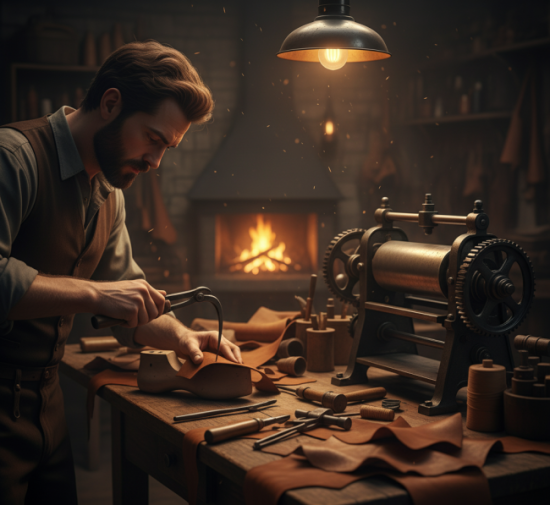
🏺 Ancient Craftsmanship: Sandals and Beyond
Ancient shoemakers blended utility with status in footwear history. The Pharaoh’s sandal (1200 B.C.) featured a peaked toe for nobles, while commoners used hemp or papyrus with leather straps. The Greek Krepis, with its carved tongue, and the athletic Pedila (1000-700 B.C.) showcased diverse ancient shoe design.
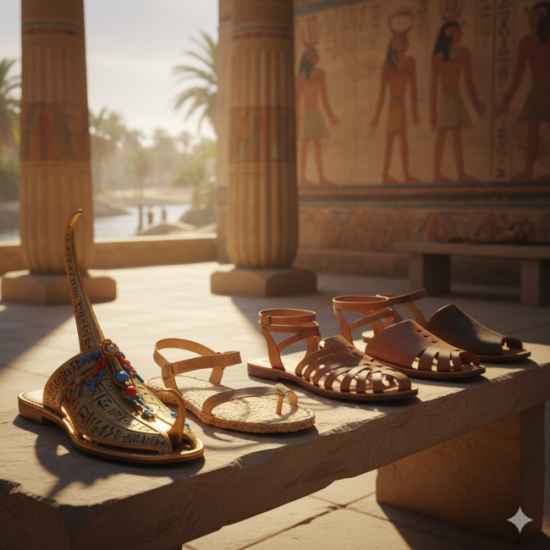
👑 Medieval Marvels: From Battle to Boudoir
Medieval footwear served as a statement in footwear history, with the Pikeman’s shoe and metal Sabbaton aiding soldiers, and the Zo-ri offering Japanese simplicity. The “Bear’s paw” carbatine added a quirky, outlawed flair.
These designs catered to war and home life.
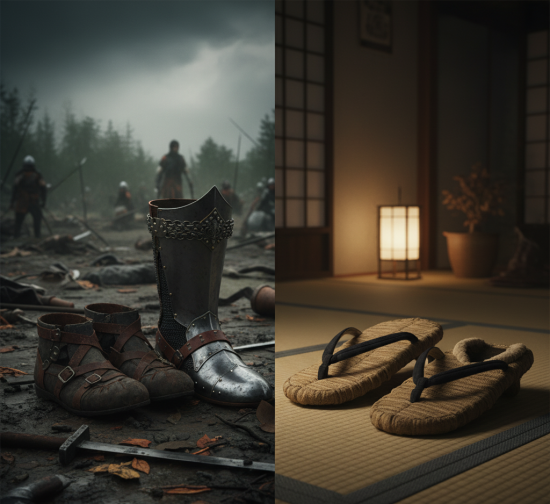
👠 Renaissance and Beyond: Fashion Meets Function
The Renaissance elevated footwear history with the Leather Buskin for drama, the noble Babouche, and the status-boosting Venetian Chopine. The Talaria Crepida, Kothornos, and campagus added theatrical and rank-signaling designs.
These styles merged fashion with utility.
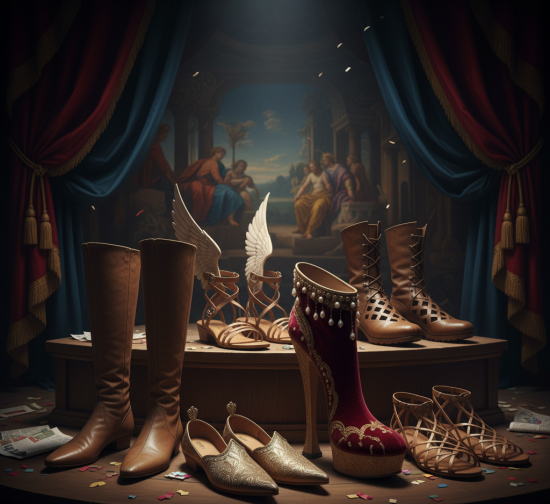
🛠 Industrial Roots: Tools and Techniques
The lasting pincer limited 19th-century output, but Elias Howe’s 1846 sewing machine and later innovations like the Goodyear Welt machine revolutionized shoe manufacturing history. Varieties like Oxford boots and Geta emerged, reflecting growing diversity.
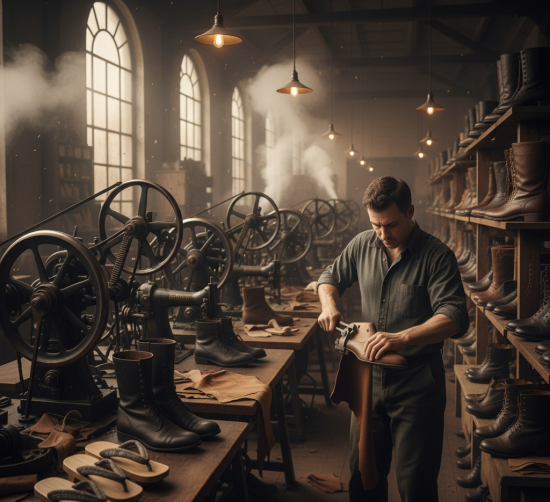
🧠 Reflections: A Legacy Continues
This journey through footwear history reveals its deep ties to culture, necessity, and innovation. From moccasins to mechanized boots, each design enriches the story. Share your thoughts below!


